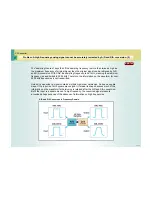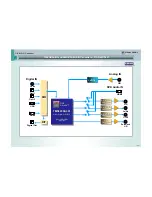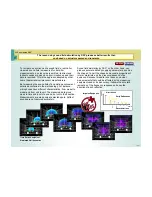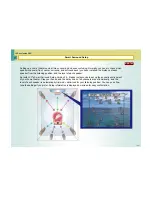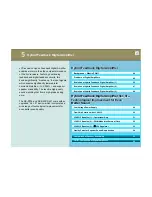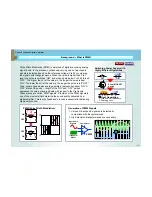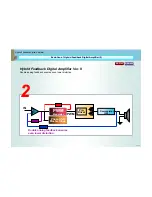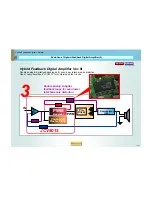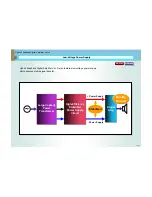
< 35 >
To recreate an environment’s sound field, a real hall or
cinema’s sound field is measured for data. For
measurements, a pulse noise is emitted, its direct and
indirect sounds are picked up by microphones, and their
data is recorded. This is the approach adopted by other
home theater receiver/processor manufacturers.
But measuring the sound field of an existing environment
entails inaccuracies in the methodology. For instance,
microphones have different characteristics, from model to
model and from unit to unit. The measured data gives
clues to time and level of a sound, but not to the direction.
Measurements are made only at selected spots. Softest
sounds are not captured accurately.
Impulse Response
Time Series Analysis of
Simulated Hall Acoustics
Sound field simulation by DSP, on the other hand, can
produce accurate data by supplying parameters, such as
the shape of a hall, the shape and acoustic properties of
interior materials, and the presence/absence of an
audience. Because this data is not based on actual
measurements that could be affected by the measuring
equipment used or its inaccuracy, it allows the accurate
recreation of the frequency response and even the
direction of each reflection.
Direct Sound
Early Reflections
Reverberations
Le
v
e
l
Time
JVC exclusive DSP
JVC exclusive DSP
The reason why sound field simulation by DSP produces better results than
one based on actual measured environments.
The reason why sound field simulation by DSP produces better results than
one based on actual measured environments.
RX-D702
RX-D402
*Also applies to RX-D401
Summary of Contents for RX-D702
Page 1: ... 1 ...
Page 63: ... 63 ...

